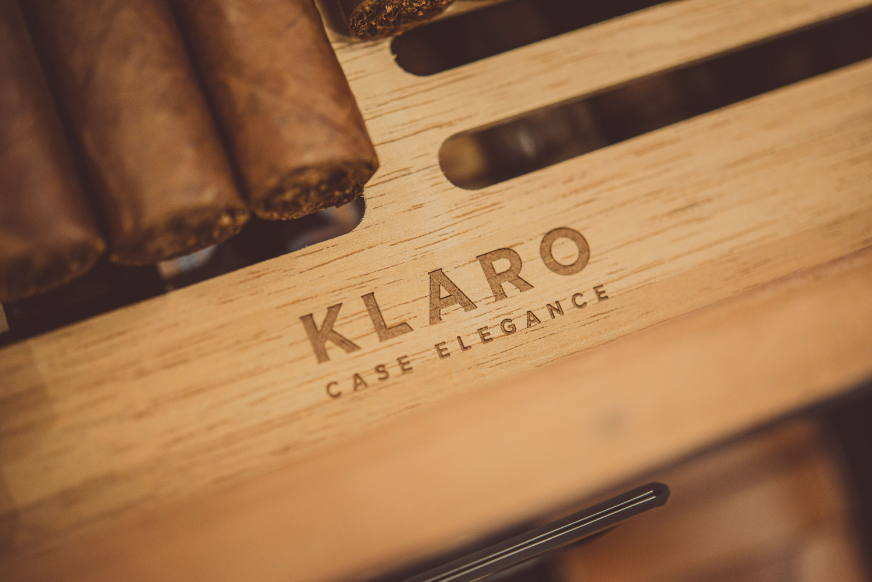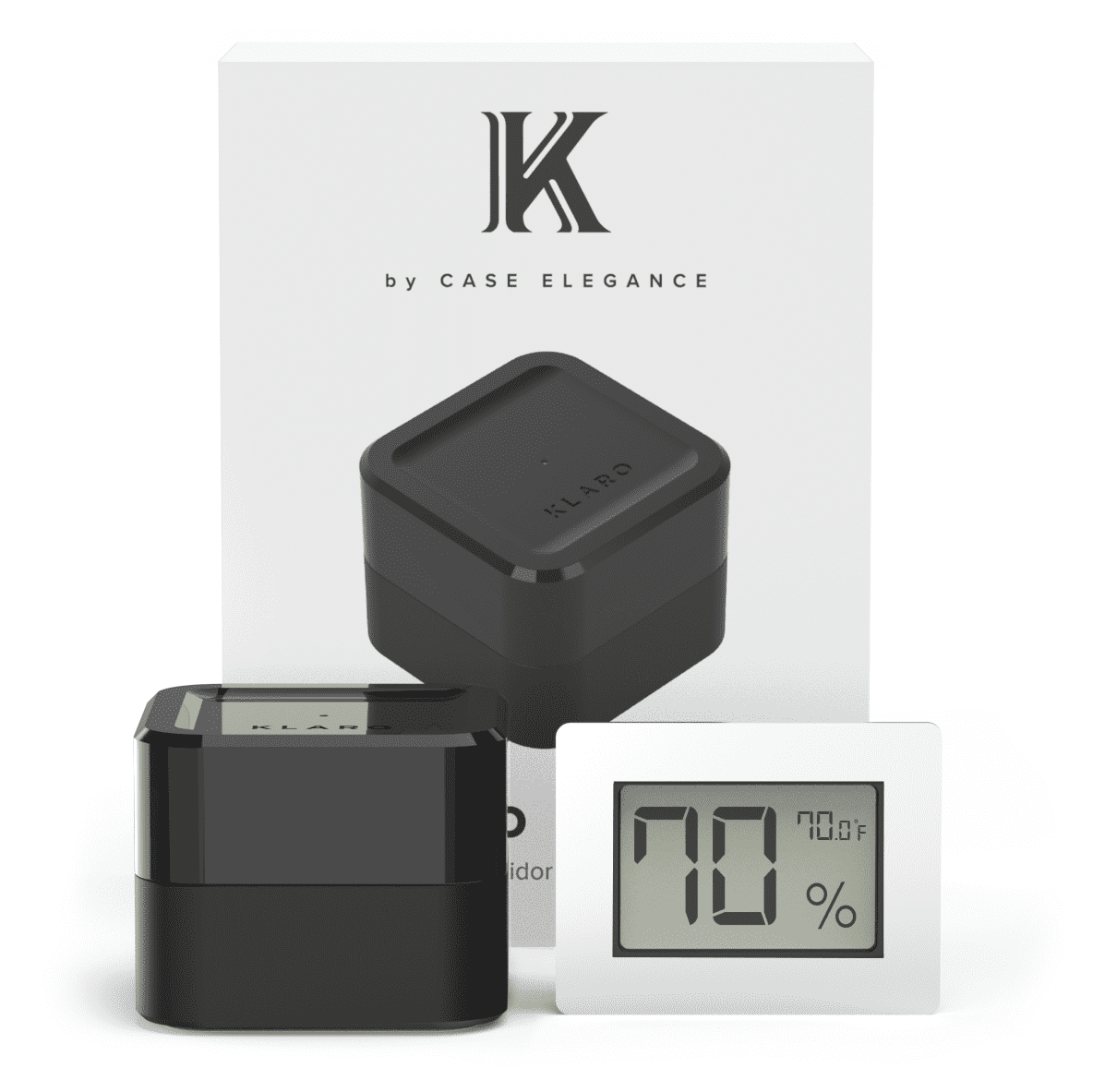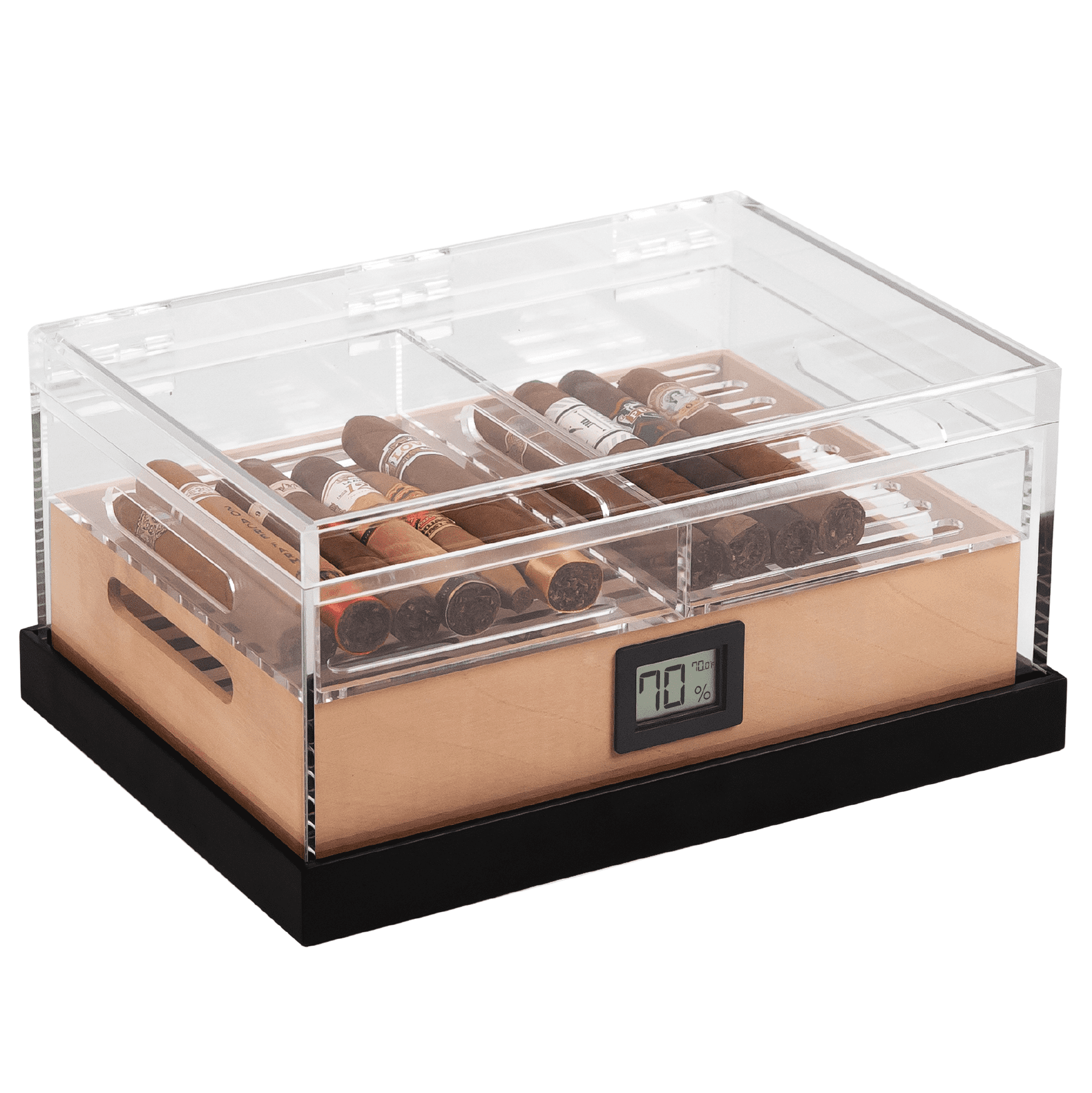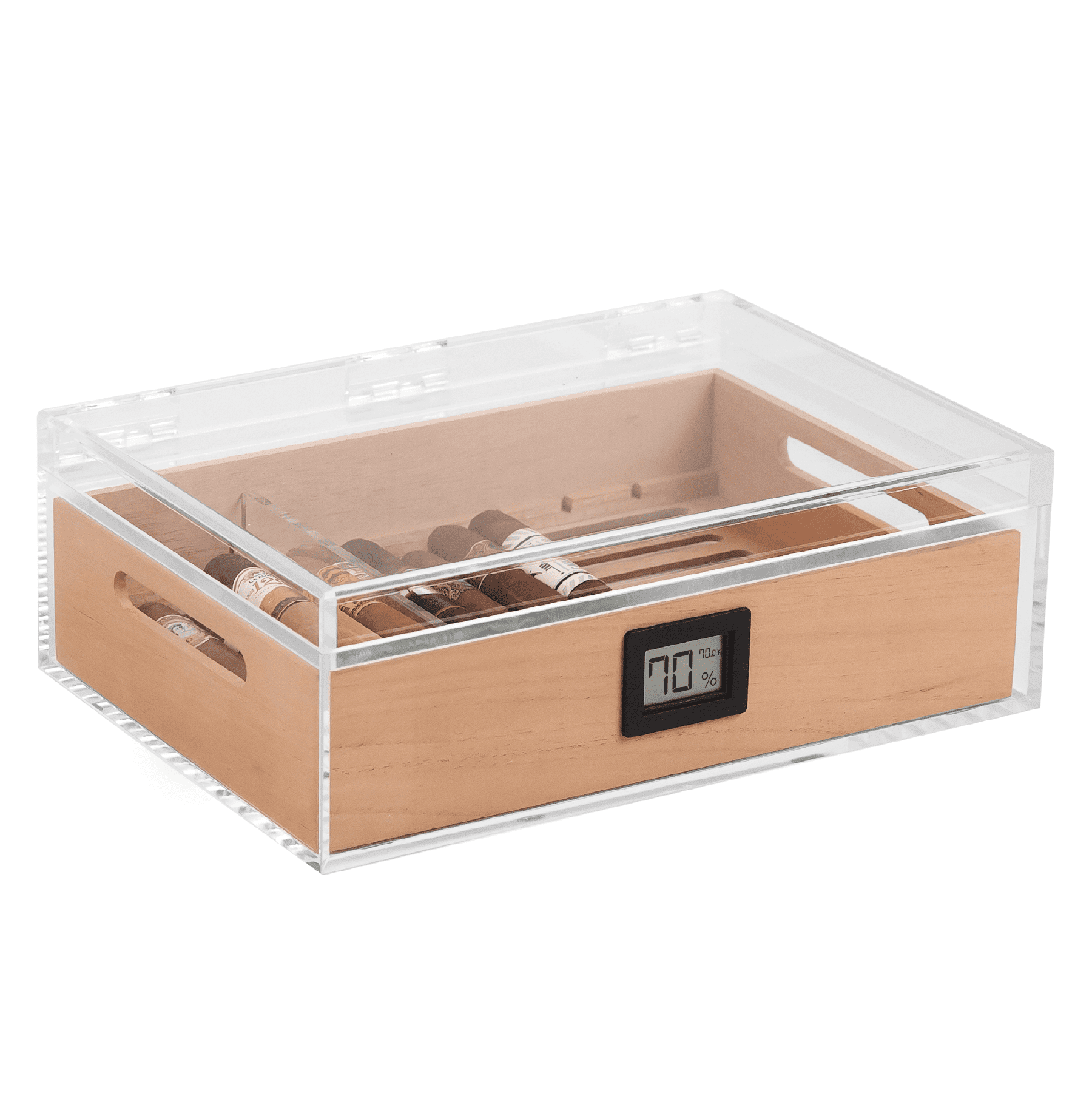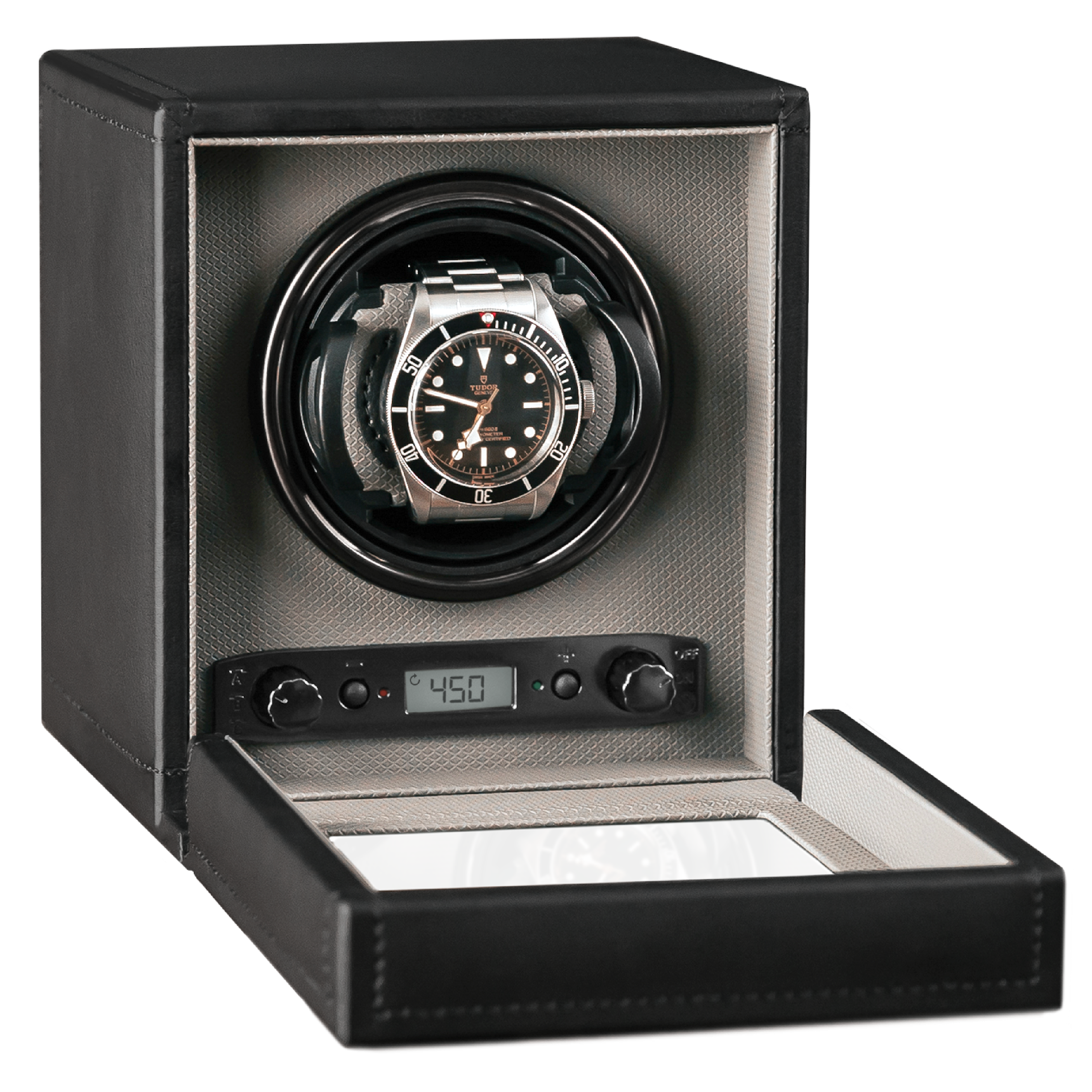The primary purpose of a humidor is to preserve cigars in the state we purchased them. We maintain humidity levels to prevent changes to the cigars like dryness or mold, or anything that would affect the taste or experience that comes with a cigar. Some cigar collectors even leave cigars in cellophane wrapping in an attempt to keep the cigars preserved in their original, factory condition.
But there’s more happening to cigars stored inside a humidor than just preservation. Collectors suggest leaving your cigars in your humidor for at least three months before partaking. And some aficionados recommend years of aging before partaking. Why? And what’s happening to the actual tobacco to improve the experience?
The humidor wood prevents drying and cracking–or moistening and molding. But the tobacco changes and blends together over time, and the essential oils merge. This aging process can reduce bitterness in some cigars, and can reduce the aggressiveness in too-bold flavors. It can improve the smoking experience altogether.
Still, it can feel counterintuitive to leave costly cigars in a humidor for months, if not years. Is aging your cigar collection worth it?
What is Aging?
Many cigar enthusiasts boast that aging can improve cigars. Like wine or whiskey, the extended fermentation process changes the composition of the tobacco compounds, mellowing harsh flavors, and leading to a more refined smoking experience. Cigars continue the fermentation process started during manufacturing. even as the correct temperature and humidity levels prevent molding, dryness, or tobacco beetles.
Aging occurs once the tobacco has been cured to a stable preservation level, humidity and temperature are consistent, and additional time allows for the breakdown of organic compounds. Not all cigars are created equal, and some will be closer to “ripeness” than others when you buy them.
At the DIY level, aging is tough to get right. And it can be risky–especially without a trusted humidor. We trust aged cheeses from the store, but we generally don’t attempt additional maturation at home, left to our own devices. Knowing how long to age your cigars can be difficult. But there are four main stages to cigar maturation:
Sick Period: 3-12 months
During this time, the cigar still contains large amounts of ammonia produced during the fermentation stage. These cigars are acidic and harsh, and it’s not recommended you smoke cigars at this stage. Most cigars are sold after this stage is finished, but, should you detect a sharp ammonia stage, definitely keep it in the humidor longer.
First Maturation: 1-5 years
Most of the ammonia should be undetectable during the first maturation stage, and only trace amounts are chemically present. Oils are still largely present, and that’s why these cigars will still produce a large amount of smoke, and the flavors will be more distinct and singular. For the novice cigar smoker, this is a good time to learn how to identify unique flavors and aromas.
Second Maturation: 5-15 years
As the compounds and tobacco go through further degradation, the flavor becomes more rounded, more nuanced. Acids decompose and interact with the purified flavors as all ammonia is absent. Many consider this stage to be the point of diminishing returns for most cigars: beneficial aging longer than this will be dependent on the quality and type of cigar.
Third Maturation: 20+
These are truly vintage cigars. At this point of maturation, you run the risk of voiding a good cigar that wasn’t meant to store for this amount of time. But for those cigars that can maintain their integrity, they continue to develop more complex flavors as they mature.
The Science Behind Aging
Tobacco manufacturers cure, ferment, and pre-age tobacco prior to selling. So what happens to the actual leaves and cigars during this curing time? By understanding this process, you better know your role if you decide to age your cigars beyond what the manufacturer completes.
Curing
During the curing process, the tobacco leaves are dried out through various methods like flue-curing, sun curing, air curing, and fire curing.
The chemical process that occurs during curing has to do with the breaking down of organic compounds in the tobacco leaf. Yes, curing removes the moisture from the tobacco to allow it to continue aging without molding, but the breakdown of organic compounds through oxidization is responsible for creating the aromatics present in your cigar collection.
Carotenoids–the yellow, orange, or red pigments in vegetation and certain proteins–degrade during this process, which contributes to the aroma present in cigars. The pigment responsible for the aroma has also been found present in full-bodied red wines and honey, and it has been isolated to produce synthetic tobacco smells.
Fermentation
Once the tobacco leaves have been cured, they’re stacked in pilons where they generate heat and release moisture and ammonia. Ammonia is a natural byproduct of the fermentation process. During fermentation, the tobacco becomes smokeable.
Once you purchase cigars, it’s likely they’ve completed the first stage of maturation and aren’t overwhelmed by ammonia. But use the smell test to see if you detect any levels of ammonia, as these cigars should be further aged in your humidor. If not, you still might stand to improve the experience by months or years of aging.
Does Aging Improve All Cigars?
Not all cigars will benefit from additional aging.
The cigars you purchase have already been aged by the manufacturer to some degree. The process at the manufacturing facility typically lasts from 30-90 days, allowing the ammonia to dissipate that’s produced during fermentation. But the process is different for each brand and type of tobacco. And not all cigars need to continue aging. In fact, some can lose flavor rather than concentrate and blend.
As a general rule, avoid aging milder cigars, which don’t need that additional time to blend the harsher profiles.
Cigars tend to mellow in flavor over time. The point of aging is to allow the tobacco to further marry together after the fermentation process: essential oils combine and the tobacco becomes even less ammonic, which will make the flavor less acidic, tannic, spicy, and harsh. So full-bodied and medium-bodied cigars will benefit more from the aging process.
Aging Cigars at Home
The key to long-term cigar maturation is to maintain the right storage conditions for your cigars. A humidor with Spanish cedar, a digital or analog hygrometer, and a hydration system is a must-have. But keep in mind these other considerations:
Experiment with cigars at various stages of aging. Sure, there’s some risk you miss the peak stage of a cigars lifecycle. But a good trick is to stagger cigars at various aging levels to begin to hone your personal preference.

